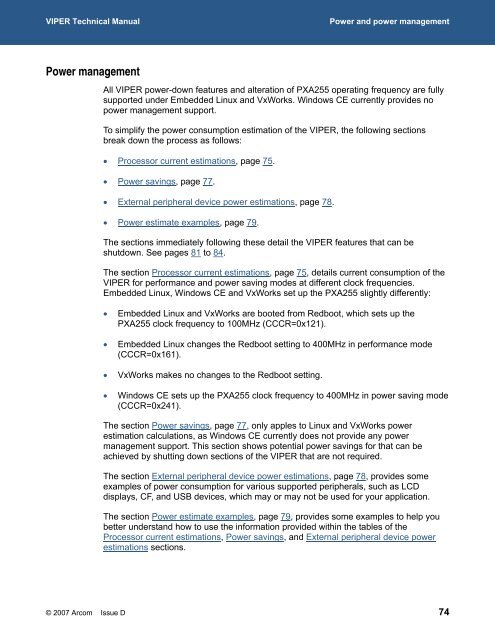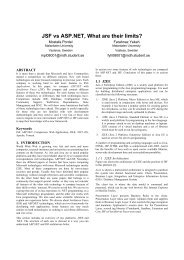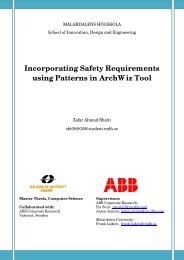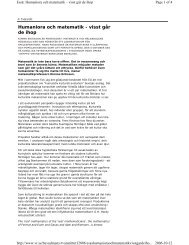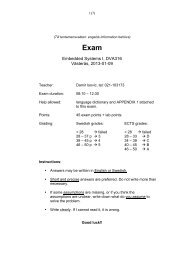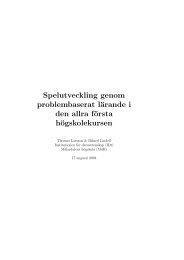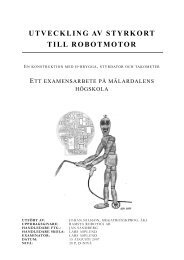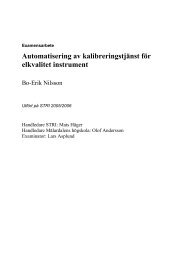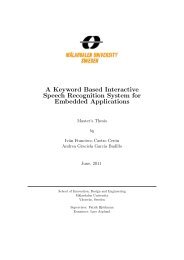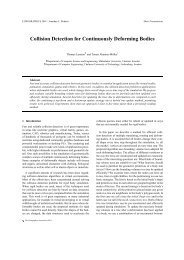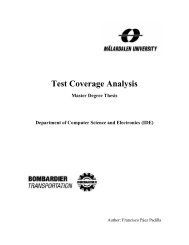Create successful ePaper yourself
Turn your PDF publications into a flip-book with our unique Google optimized e-Paper software.
<strong>VIPER</strong> <strong>Technical</strong> <strong>Manual</strong>Power and power managementPower managementAll <strong>VIPER</strong> power-down features and alteration of PXA255 operating frequency are fullysupported under Embedded Linux and VxWorks. Windows CE currently provides nopower management support.To simplify the power consumption estimation of the <strong>VIPER</strong>, the following sectionsbreak down the process as follows:• Processor current estimations, page 75.• Power savings, page 77.• External peripheral device power estimations, page 78.• Power estimate examples, page 79.The sections immediately following these detail the <strong>VIPER</strong> features that can beshutdown. See pages 81 to 84.The section Processor current estimations, page 75, details current consumption of the<strong>VIPER</strong> for performance and power saving modes at different clock frequencies.Embedded Linux, Windows CE and VxWorks set up the PXA255 slightly differently:• Embedded Linux and VxWorks are booted from Redboot, which sets up thePXA255 clock frequency to 100MHz (CCCR=0x121).• Embedded Linux changes the Redboot setting to 400MHz in performance mode(CCCR=0x161).• VxWorks makes no changes to the Redboot setting.• Windows CE sets up the PXA255 clock frequency to 400MHz in power saving mode(CCCR=0x241).The section Power savings, page 77, only apples to Linux and VxWorks powerestimation calculations, as Windows CE currently does not provide any powermanagement support. This section shows potential power savings for that can beachieved by shutting down sections of the <strong>VIPER</strong> that are not required.The section External peripheral device power estimations, page 78, provides someexamples of power consumption for various supported peripherals, such as LCDdisplays, CF, and USB devices, which may or may not be used for your application.The section Power estimate examples, page 79, provides some examples to help youbetter understand how to use the information provided within the tables of theProcessor current estimations, Power savings, and External peripheral device powerestimations sections.© 2007 Arcom Issue D 74


